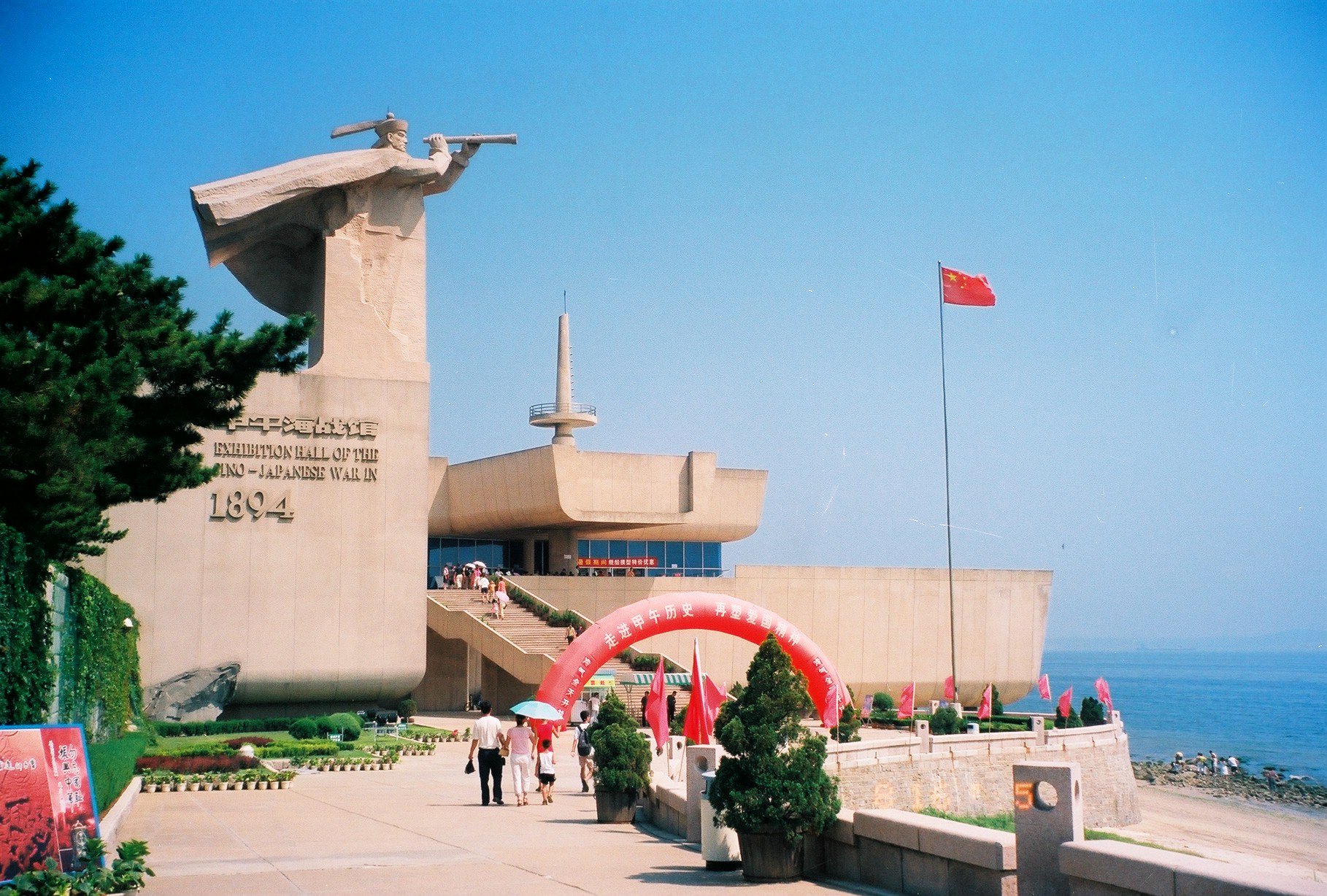- Liugong Island
Infobox Islands
name = Liugong Island

image caption = War memorial hall
image size = 250px
locator
map_custom = no
native name =
native name link =
nickname =
location =
coordinates =
archipelago =
area = 3.15 Square kilometre
length = 4.08 kilometers
width = 1.5 kilometers
coastline = 14.93 kilometers
highest mount = Qiding Mountain
elevation = 153 meters
country = China
country admin divisions title = Province
country admin divisions =Shandong
country admin divisions title 1 = City
country admin divisions 1 =Weihai
country admin divisions title 2 =
country admin divisions 2 =
country capital city =
country largest city =
country largest city population =
country leader title =
country leader name =
population =
population as of =
density =
ethnic groups =
additional info =Liugong Island (zh-stp|s=刘公岛|t=劉公島|p=Liúgōng dǎo) is a small island located on the northeastern edge of
Shandong Peninsula,China at the mouth ofWeihai Bay. It is known as the "birthplace of China's first navy".Geography
Liugong Island is located about 4
kilometer s from the city of Weihai. It has an area 3.15square kilometer s, with a maximum length of 4.08 kilometers (in east-western direction) and a maximum width of 1.5 kilometers. The coastline has a total length of 14.93 kilometers. In general, the terrain of the island slopes down from the north to the south. With an altitude of 153meter s, Qiding Mountain, is the highest point of the island. Its northern slope is made up of cliffs, whereas the southern side of the hill slopes down more gently. More than half the of island's area (about 1.8 square kilometers) is covered by forest, predominantly consisting of blackpine trees. The forest is protected by a national forestry park.History
Archaeological evidence suggests that the island has been inhabited at least from the Warring States Period onwards. During the times of the
Han Dynasty , the island was settled by members of the Liu family which resulted in the present-day name. The use of the island was subject to several changes during theMing Dynasty : At first, all inhabitants left the island because of pirate threats. During the reign of theJiajing Emperor , a rebel force led byXian Wang sought refuge on the island, but the rebellion was put down shortly thereafter. Towards the end of the reign of theWanli Emperor , settlers were recruited to re-cultivate the island. They were guarded against pirate attacks by a detachment of troops. Subsequently, a rise in shipping activities between the north and the south of China brought prosperity and an increase in population to the island. In1663 , the island's population was evacuated yet again, this time in response to the outbreak of an epidemic. 27 years later, in1690 , the island was resettled by three families (Cong, Zou, and Jiang). In1703 , the island was chosen as the base for another rebel force, but again the rebellion was short-lived.During the reign of the
Guangxu Emperor , theBeiyang Fleet was founded as China's first modern navy and a telegraph center, a naval academy, and the headquarter of the Beiyang Naval Units were set up on Liugong Island. This resulted in the construction of many facilities and an increase in the island's population. 8 out of 15 modern warships which were bought from theUnited Kingdom andGermany where assigned to the Beiyang Fleet. OnSeptember 14 1888 ,Ding Ruchang was given the command of the Beiyang Fleet. From1887 onwards, more than 100 cannons were setup up around the harbor of Weihai as well as on the islands of Liugong and Ri. Eventually, Ding Ruchang made Liugong Island his official residence. A t-shaped dock, known as the "iron dock" was constructed in the years1889 to1891 .During the
First Sino-Japanese War , the Beiyang Fleet suffered a crushing defeat and in the spring of 1895, the island was occupied by Japanese forces. Ding Ruchang committed suicide. The Japanese occupation lasted for about 3 years. In1898 , theUnited Kingdom bought the island (along with the rest of Weihaiwei) off the Japanese and agreed to hand it back to China after 25 years of use or when the Russians left the nearby Port Arthur. Local Chinese were recruited into a British regiment but the island was not fortified. TheRoyal Navy established a base on Liugong Island occupying and extending the existing facilities. Residences, hospitals, churches, tea houses, a sport ground, a post office, and navy cemeteries were constructed as part of the British development of the area. When the Russians left Port Arthur in 1905, the terms of the lease meant Britain should return the island to China. Britain re-negotiated the lease with the Chinese to counter a new German presence in the area. Weihaiwei was returned to theRepublic of China in 1930, after which it was a special administrative region. The Chinese government allowed the Royal Navy to continue to use the naval base for another ten years, but this was cut short when Japan invaded in 1938. In1949 , the island was occupied by thePeople's Liberation Army . [http://www.allstates-flag.com/fotw/flags/cn_gbcol.html]External links
* [http://www.china-sd.net/eng/sdtravel/scenery/15.asp Online article hosted by Shandong On Internet]
Wikimedia Foundation. 2010.
